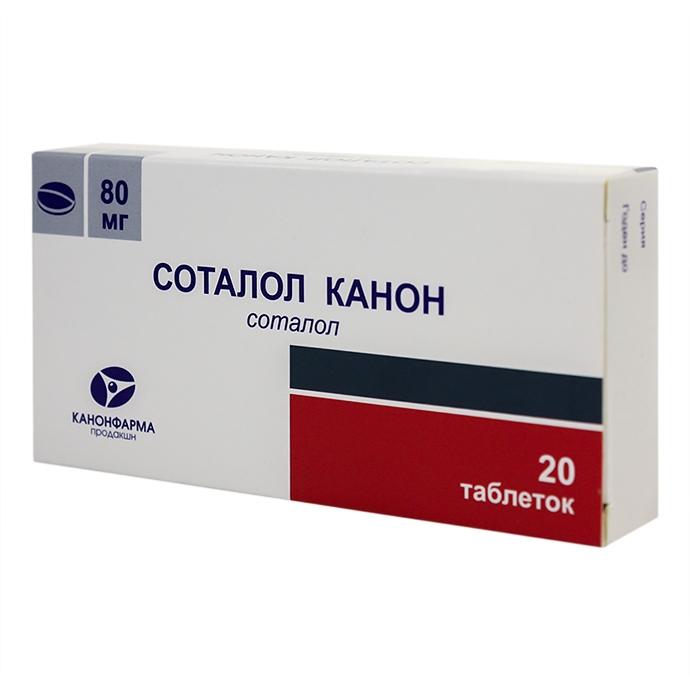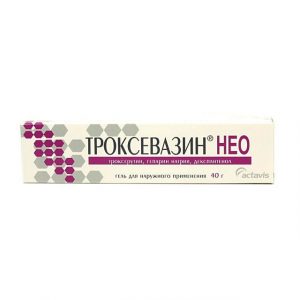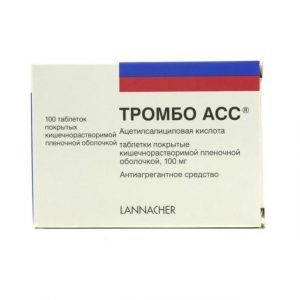Description
Release form
Tablets
Packaging
20 pcs
Pharmacological action
Beta1-, beta2-blocker. Sotalol is a non-selective -Adrenoreceptor blocker that acts on both 1- and 2 receptors without its own sympathomimetic and membrane-stabilizing activity.
Like other beta-blockers, sotalol inhibits the secretion of renin, and this effect is pronounced both at rest and during exercise. The beta-adrenergic blocking effect of the drug causes a decrease in heart rate (negative chronotropic effect) and a limited decrease in heart rate (negative inotropic effect). These changes in heart function reduce myocardial oxygen demand and heart load.
The antiarrhythmic properties of sotalol are associated with both blockade of -adrenoreceptors and the ability to prolong the myocardial action potential. The main effect of sotalol is to increase the duration of effective refractory periods in the atrial, ventricular, and additional ways of conducting an impulse. On an ECG taken in standard leads, properties corresponding to class II and III of antiarrhythmic drugs can be reflected in the form of lengthening of the intervals PR, QT and QTc (QT with correction for heart rate) in the absence of noticeable changes in the duration of the QRS complex.
Pharmacokinetics
Absorption
Oral bioavailability is almost complete (over 90%). Cmax in plasma is reached after 2. 5-4 hours after ingestion. The absorption of the drug is reduced by approximately 20% with food compared with fasting. In the range of doses from 40 to 640 mg / day, the concentration of sotalol in the blood plasma is proportional to the dose taken.
Distribution of
Does not bind to plasma proteins. It is distributed in plasma, as well as in peripheral organs and tissues. Css is reached within 2-3 days. It penetrates poorly through the BBB, and the concentration in the cerebrospinal fluid is only 10% of the concentration in the blood plasma.
Metabolism
Not metabolized. The pharmacokinetics of the d- and l-enantiomers of sotalol is almost the same.
Excretion
The main route of excretion from the body is through the kidneys. From 80 to 90% of the administered dose is excreted unchanged by the kidneys, and the rest through the intestines. T1 / 2 is 10-20 hours.
Pharmacokinetics in special patient groups
Patients with impaired renal function should be prescribed lower doses of the drug.
With age, the pharmacokinetics do not change significantly, although impaired renal function in elderly patients reduces the elimination rate, which leads to an increased accumulation of the drug in the body.
Indications
prophylaxis of paroxysmal atrial tachycardia, paroxysmal atrioventricular recurrent tachycardia of the re-enter type, paroxysmal atrioventricular recurrent tachycardia based on additional pathways of paroxysmal surgery and paroxysmal paroxysmal surgery Wolf-Parkinson-White Syndrome
maintaining a normal sinus rhythm after stopping atrial fibrillation or atrial flutter
treatment of symptomatic unstable ventricular tachyarrhythmias and symptomatic premature ventricular contractions
treatment of high blood levels caused by high or low blood pressure.
Contraindications
decompensated chronic heart failure
cardiogenic shock
AV block II and III degree
sinoatrial blockade
SSSU
acquired tachycardia type pirouette srddlkp minor bronchial asthma or COPD
pheochromocytoma without the simultaneous administration of alpha-blockers
renal failure (CC less than 10 ml / min)
general anesthesia using medication tv, causing suppression of myocardial function (e.g. cyclopropane or trichlorethylene)
arterial hypotension (systolic blood pressure less than 90 mmHg)
severe peripheral circulatory disorders,flax to sotalol or other components of the drug and sulfonamide derivatives.
With caution, the drug should be prescribed to patients who have recently had myocardial infarction, with diabetes mellitus, psoriasis, patients with impaired renal function, with AV blockade of the first degree, impaired water-electrolyte balance (hypomagnesemia, hypokalemia), thyrotoxicosis, depression (i.e. hours in the anamnesis), pheochromocytoma (with simultaneous administration with alpha-blockers), aggravated allergic history, elderly patients.
Special instructions
Treatment with Sotalol Canon is carried out under the control of heart rate, blood pressure, ECG. In case of drug withdrawal, the dose should be reduced gradually. You can not abruptly interrupt treatment because of the danger of developing severe arrhythmias and myocardial infarction. Cancellation is carried out gradually.
With thyrotoxicosis, Sotalol Canon can mask certain clinical signs of thyrotoxicosis (eg, tachycardia). Abrupt withdrawal in patients with thyrotoxicosis is contraindicated, since it can enhance the symptoms of the disease.
When prescribing Sotalol Canon, patients with pheochromocytoma should be given alpha-blockers at the same time.
Caution is advised when prescribing beta-blockers to patients receiving hypoglycemic drugs, since hypoglycemia may develop during prolonged breaks in food intake. Moreover, symptoms such as tachycardia or tremor will be masked by the action of the drug.
The drug Sotalol Canon should not be used in patients with hypokalemia or hypomagnesemia until the correction of existing disorders. These conditions may increase the degree of lengthening of the QT interval and increase the likelihood of pirouette type arrhythmias. Particularly careful monitoring of electrolyte balance and acid-base state in patients with severe or prolonged diarrhea and in patients receiving drugs that cause a decrease in the content of magnesium and / or potassium in the body.
The patient should be trained in the method of calculating heart rate and instructed on the need for medical advice for heart rate less than 50 beats / min.
In smokers, beta-blockers are less effective.
Patients using contact lenses should consider that tear fluid production may be reduced during treatment.
It is possible to increase the severity of the hypersensitivity reaction and the lack of effect of the usual doses of epinephrine against the background of a burdened allergic history.
In the case of elderly patients with increasing bradycardia (less than 50 beats / min), arterial hypotension (systolic blood pressure below 100 mmHg), AV block, bronchospasm, ventricular arrhythmias, severe liver and kidney dysfunctions, it is necessary to reduce the dose or stop treatment.
It is recommended that therapy be discontinued in the event of development of depression caused by beta-blockers.
Alcohol use should be avoided during treatment.
The drug should be discontinued before testing in the blood and urine of catecholamines, normetanephrine and vanillinindic acid, antinuclear antibody titers.
Influence on the ability to drive vehicles and control mechanisms
During the treatment period, headaches and feelings of fatigue may occur, therefore care must be taken when driving vehicles and engaging in other potentially dangerous activities that require an increased concentration of attention and speed of psychomotor reactions.
Composition of
1 tablet contains:
Active ingredient:
sotalol hydrochloride – 80 mg
Excipients:
calcium hydrogen phosphate dihydrate – 118 mg,
silicon dioxide colloidal manganese krld – 1 mg, 1 mg
sodium krd – 56.8 mg,
povidone – 8.6 mg,
magnesium stearate – 3.6 mg.
Dosage and administration
The drug is taken orally 1-2 hours before meals.
At the beginning of treatment, it is recommended to prescribe 160 mg / day in 2 divided doses (after about 12 hours). This dose can be increased if necessary after an appropriate clinical assessment of the patient’s condition to 240 or 320 mg / day. In most patients, the therapeutic response is achieved with the use of the drug in a total daily dose of 160-320 mg, divided into 2 doses.
Some patients with life-threatening refractory ventricular arrhythmia may require up to 480-640 mg / day, however, such doses can only be prescribed in cases where the potential benefit outweighs the risk of side effects, especially proarrhythmogenic effects.
In patients with cardiomyopathy, chronic heart failure, with angina pectoris, arterial hypertension, conditions after myocardial infarction, it is recommended to begin treatment in a hospital. The initial dose is 160 mg / day in 1 or 2 doses. After a week, the dose can be increased if necessary by 80 mg / day (1 tab. 80 mg or 1/2 tab. 160 mg) at weekly intervals. The rate of dose increase depends on the tolerability of the drug to patients, which, in particular, is assessed by the degree of bradycardia induced and the clinical response. Due to the relatively long T1 / 2 in most patients, sotalol is effective when taken 1 time / day. Dose interval: 160-320 mg / day.
Patients with impaired renal function
Since sotalol is excreted mainly in the urine, T1 / 2 increases in the presence of renal failure, the dose should be reduced at a serum creatinine level of more than 120 μmol / L in accordance with the following recommendations:
Serum creatinine Recommended dose
μmol / l mg / dl
less than 120 Usual dose
120-200 1.20-3 / 4 usual dose
200-300 2.3-1 / 2 usual dose
300-500 3.4-1 / 4 usual doses of
Side effects
Sotalol is usually well tolerated. Side effects are transient and in rare cases require interruption or discontinuation of treatment.
From the side of the nervous system: dizziness, headache, sleep disturbance (drowsiness or insomnia), depression, paresthesia in the extremities, anxiety, emotional lability, depression, tremor.
From the side of the organ of vision: visual impairment.
On the part of the hearing organ: hearing impairment.
From the cardiovascular system: bradycardia, chest pain, shortness of breath, ECG changes, palpitations, arterial hypotension, arrhythmogenic effect, heart failure, peripheral edema, fainting.
From the digestive system: nausea, vomiting, dyspepsia, diarrhea, abdominal pain, flatulence, violation of taste sensations.
From the genitals and mammary gland: decreased potency.
From the musculoskeletal system: cramps.
Allergic reactions: urticaria, skin rash.
Common disorders: fever, feeling tired, asthenia.
On the part of laboratory and instrumental data: overestimated results may be observed with the photometric analysis of urine for methanephrine (O-methyladrenaline).
If pheochromocytoma is suspected, the urine of patients should be examined using high performance liquid chromatography with solid phase extraction.
Drug Interactions
Simultaneous administration of sotalol with class IA antiarrhythmic drugs (disopyramide, quinidine, procainamide) and class III drugs (e.g. amiodarone) can cause an extended QT interval.
The use of potassium-lowering diuretics can lead to hypokalemia or hypomagnesemia, which increases the likelihood of arrhythmias such as pirouette.
Sotalol should be used with extreme caution in combination with other drugs that extend the QT interval, such as class I antiarrhythmic drugs, phenothiazines, tricyclic antidepressants, terfenadine and astemizole, as well as some quinolone antibiotics.
The simultaneous use of beta-blockers and slow calcium channel blockers can lead to arterial hypotension, bradycardia, conduction disturbances and heart failure. The use of beta-blockers in combination with slow calcium channel blockers that suppress myocardial function (e.g., verapamil and diltiazem) should be avoided due to the additive effect of these agents on AV conduction and ventricular function.
The simultaneous use of agents that deplete the catecholamine depot (for example, reserpine and guanitidine), together with beta-blockers leads to an excessive decrease in the tone of the sympathetic nervous system at rest. Patients should be carefully monitored due to possible signs of a decrease in blood pressure and / or severe bradycardia, which can lead to fainting.
With simultaneous use with insulin and hypoglycemic agents for oral administration, hyperglycemia may develop. In this case, it is necessary to carry out dose adjustment of hypoglycemic agents. Sotalol may mask the symptoms of hypoglycemia.
When used concomitantly with sotalol, beta2-adrenergic agonists, such as salbutamol, terbutaline and isoprenaline, in higher doses may be required.
The use of sotalol does not cause a noticeable effect on the concentration of digoxin in serum. Arrhythmogenic effect was observed more often in patients receiving sotalol concomitantly with digoxin, however this may be associated with chronic heart failure, which is a risk factor for arrhythmogenic effects in patients receiving digoxin.
Beta-blockers can potentiate withdrawal arterial hypertension after stopping clonidine. Therefore, beta-blockers should be withdrawn gradually, a few days before the gradual discontinuation of clonidine.
In the event of shock or arterial hypotension due to flactaphenin, beta-blockers cause a decrease in compensatory cardiovascular reactions.
Use of funds for inhalation anesthesia, incl. tubocurarine, while taking sotalol, increases the risk of inhibition of myocardial function and the development of arterial hypotension.
With simultaneous use with amphotericin B and GCS, it is necessary to control the concentration of potassium.
Concomitant use with laxatives is not recommended.
Overdose
Symptoms: bradycardia, chronic heart failure, exacerbation of chronic heart failure, excessive decrease in blood pressure, bronchospasm, hypoglycemia.
Treatment: gastric lavage, administration of activated charcoal for disorders of AV-conductivity is injected into / in 1-2 mg of atropine, with low efficiency set a temporary pacemaker with bronchospasm – inhalation or parenteral beta-adrenomimetic in reducing blood pressure is effective epinephrine.
Storage Conditions
The product should be stored out of the reach of children, in a dry, dark place at a temperature not exceeding 25 ° C.
Shelf life
2 years
Deystvuyushtee substance
Sotalol
Terms and conditions
prescription
Dosage form
tablets
Possible product names
Sotalol Canon tablets 80 mg 20 pcs.
Canonfarma, Russia




